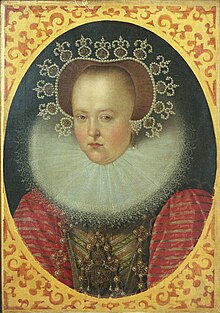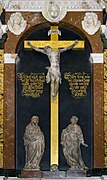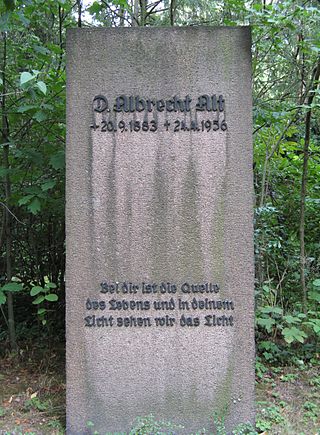
Albrecht Alt, was a leading German Protestant theologian.
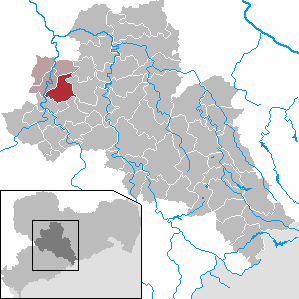
Seelitz is a municipality in the district of Mittelsachsen, in Saxony, Germany. It is part of the administrative partnership Verwaltungsgemeinschaft Rochlitz based in the eponymous town.

Georg Robert Döpel was a German experimental nuclear physicist. He was a participant in a group known as the "first Uranverein", which was spawned by a meeting conducted by the Reichserziehungsministerium, in April 1939, to discuss the potential of a sustained nuclear reaction. He worked under Werner Heisenberg at the University of Leipzig, and he conducted experiments on spherical layers of uranium oxide surrounded by heavy water. He was a contributor to the German nuclear weapon project (Uranprojekt). In 1945, he was sent to Russia to work on the Soviet atomic bomb project. He returned to Germany in 1957, and he became professor of applied physics and director of the Institut für Angewandte Physik at the Hochschule für Elektrotechnik, now Technische Universität, in Ilmenau (Thuringia).

Helmut Franz Maria Kirchmeyer is a German musicologist, philologist and historian.

Josef Goller was a German designer, most notably of stained glass.
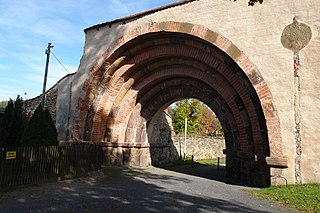
Altzella Abbey, also Altzelle Abbey, is a former Cistercian monastery near Nossen in Saxony, Germany. The former abbey contains the tombs of the Wettin margraves of Meissen from 1190 to 1381.

Wolf Caspar Klengel, from 1664 von Klengel, was a German architect in Saxony,

St. Matthew was a church in the old town of Leipzig. During its history it had several names and functions. As a church of the Franciscan order, built in 1488, it was known as Barfüßerkirche and Heiliggeistkirche. It served as a Lutheran church, known as Neukirche, from 1699. A new congregation formed in 1876 and named the church Matthäikirche. The building was destroyed in a bombing in 1943.

Old St. Peter's Church is a Lutheran parish and church in the old town of Leipzig, Germany. The present church building, in Gothic Revival style, was erected from 1882 onwards at the Gaudigplatz, and also serves as a concert venue. It replaced a former building at a different location.
Gustav Conrad Bauer was a German mathematician, known for the Bauer-Muir transformation and Bauer's conic sections. He earned a footnote in the history of science as the doctoral advisor (Doktorvater) of Heinrich Burkhardt, who became one of the two referees of Albert Einstein's doctoral dissertation.
Christian Friedrich Erndel was a Royal Polish and Electoral Saxon Major-General of the Artillery Corps.
Christian Heinrich Erndel was a Royal Polish and Electoral Saxon Personal Physician of August the Strong. He was also a botanist and meteorologist in Dresden and Warsaw.
Winfried Schrammek was a German musicologist and organist.
Annegret Rosenmüller is a German musicologist.
Rudolf Kötzschke was a German historian who founded the Seminar for Regional History and Settlement Studies in Leipzig, the first regional history institution at a German university.

The Alte Handelsbörse or Alte Börse in Leipzig, Saxony, Germany, is the city's oldest assembly building of merchants, and also the oldest Baroque building. Built as the Börse in 1678, it is now used as an event venue and is known in English as the Old Stock Exchange.

Walter August Wilhelm Hentschel was a German art historian.
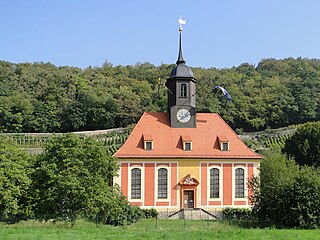
The Protestant Vineyard Church "Zum Heiligen Geist" is a baroque village church in the Dresden district of Pillnitz, named after its location in the Royal Vineyard. It is not to be confused with the Vineyard Church built in the 20th century in the Trachenberge district of Dresden.

Gedächtniskirche Schönefeld is a Lutheran church in Schönefeld, now part of Leipzig, Saxony, Germany. The former village church was built in style from 1816, replacing a previous building destroyed by fire. It was named Gedächtniskirche in 1916 when it became a memorial to fallen soldiers.
The Loschwitz Church is a baroque church in the Loschwitz district of Dresden. It was the first church built by the architect of the Dresden Frauenkirche, George Bähr. The churchyard, which was used as a cemetery until 1907, is one of the few 18th-century churchyards in Saxony that is still in its original state and is the smallest cemetery in the city at about 400 square meters. The Loschwitz church and cemetery are under monument protection.

